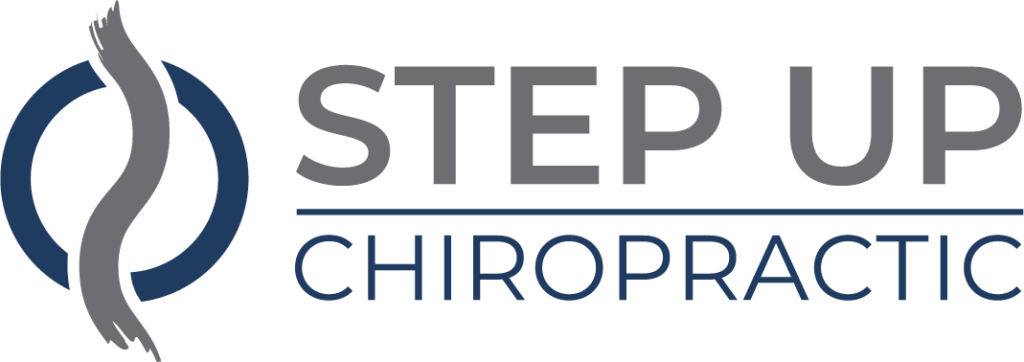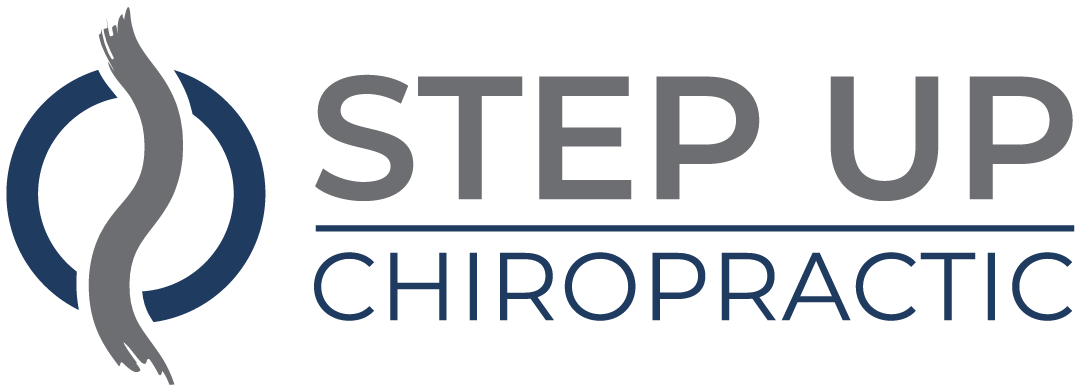When you're exploring pain relief options, it's essential to contemplate how chiropractic care stacks up against alternative methods. Chiropractic focuses on spinal alignment to address discomfort, while alternatives like acupuncture and massage therapy aim for holistic relief. Each technique has its own merits and may resonate differently with you. As you weigh these options, it's worth examining not just their effectiveness but also how well they align with your personal needs and experiences. Which approach might provide you with the best path to relief?
Overview of Pain Relief Techniques
When it comes to managing pain, you have a variety of techniques at your disposal. Understanding these options is vital for finding what works best for you. Pain relief methods range from traditional medications to alternative therapies, and each approach offers unique benefits and drawbacks.
One common technique is the use of over-the-counter (OTC) and prescription medications. Nonsteroidal anti-inflammatory drugs (NSAIDs) like ibuprofen can help reduce inflammation and alleviate pain. However, long-term use may lead to side effects, so it's important to consult your doctor about a safe plan.
Physical therapy is another effective method. Here, trained professionals guide you through exercises designed to strengthen muscles and improve mobility. This hands-on approach can provide lasting relief, but it often requires commitment and time.
You might also consider alternative therapies like acupuncture. This ancient practice involves inserting thin needles into specific points on the body, promoting natural healing and pain relief. Many people find it effective, though results can vary.
Mindfulness and relaxation techniques, such as meditation or yoga, can also play a significant role in pain management. By reducing stress and enhancing your mind-body connection, these practices can help you cope with chronic pain more effectively.
Ultimately, the best approach may involve a combination of these techniques. By exploring your options and working closely with healthcare professionals, you can create a personalized pain management plan that fits your lifestyle and needs.
Understanding Chiropractic Care
Chiropractic care is a popular method for addressing musculoskeletal pain, particularly in the back and neck. This hands-on approach focuses on aligning the spine and improving overall bodily function. If you're considering this form of treatment, it's important to understand how it works and what to expect.
Here are four key aspects of chiropractic care:
- Spinal Adjustments: Chiropractors perform specific adjustments to realign the spine. This can help alleviate pain and improve mobility.
- Holistic Approach: Chiropractic care considers your overall health, not just the immediate pain. It often involves lifestyle and wellness advice to support your healing.
- Patient-Centered Care: Your chiropractor will tailor treatments based on your individual needs and conditions. This personalized approach aims to address the root cause of your pain.
- Complementary Techniques: In addition to adjustments, many chiropractors incorporate other therapies, such as massage, exercise, and nutritional counseling, to enhance treatment effectiveness.
You might find that chiropractic care not only addresses your pain but also promotes long-term health benefits.
However, it's vital to consult with a licensed chiropractor who can evaluate your specific situation and develop a treatment plan tailored to your needs. Understanding these fundamentals can help you make an informed decision about pursuing chiropractic care as a potential solution for your pain management.
Benefits of Chiropractic Treatment
Chiropractic treatment offers several key benefits that can transform your well-being.
You might notice improved mobility and flexibility, making daily activities easier and more enjoyable.
Additionally, pain reduction techniques and a holistic health approach can help you achieve a balanced, pain-free life.
Improved Mobility and Flexibility
Experience a remarkable boost in your mobility and flexibility through chiropractic treatment. This holistic approach focuses on aligning your spine and improving your overall body function, which can lead to significant benefits.
Here are four key ways chiropractic care enhances your mobility:
- Joint Alignment: Chiropractic adjustments correct misalignments, allowing your joints to move freely and efficiently.
- Increased Range of Motion: Regular treatments can help restore and improve your range of motion, making everyday activities easier.
- Enhanced Muscle Function: By relieving tension in your muscles, chiropractic care promotes better muscle performance and coordination.
- Improved Posture: Better spinal alignment leads to improved posture, which can reduce stiffness and enhance your overall movement.
As you embrace chiropractic treatment, you'll likely notice that simple movements become easier, and activities you once found challenging become more manageable.
Whether it's playing a sport, exercising, or just enjoying daily tasks, improved mobility and flexibility can lead to a more active and fulfilling life.
Don't let stiffness hold you back; take the first step towards greater freedom of movement today!
Pain Reduction Techniques
Finding effective pain relief can feel like a challenging task, but chiropractic treatment offers a promising solution. Through targeted spinal adjustments, chiropractors help realign your body and reduce pain at its source. You might be surprised to learn how quickly you can experience relief from chronic pain or tension headaches.
Chiropractic care not only alleviates discomfort but also enhances your body's natural healing process. By improving spinal alignment, you're likely to notice reduced inflammation and increased blood flow, which can lead to faster recovery and overall well-being. This hands-on approach addresses not just the symptoms but the underlying issues contributing to your pain.
Another benefit of chiropractic treatment is its personalized nature. A chiropractor evaluates your specific condition and tailors a treatment plan just for you. This individualized care guarantees you're getting the most effective techniques for your unique situation.
Plus, many patients report longer-lasting results compared to other pain relief methods. Incorporating chiropractic care into your routine can lead to significant improvements in your quality of life, allowing you to engage in daily activities with less discomfort and more freedom.
Holistic Health Approach
Embracing a holistic health approach through chiropractic treatment can transform your overall well-being. By focusing on your body as a whole, chiropractic care aims not just to alleviate pain but to enhance your quality of life.
Here are some key benefits you might experience:
- Improved Mobility: Regular chiropractic adjustments can increase your range of motion, helping you move freely without discomfort.
- Enhanced Mental Clarity: Chiropractic care can reduce tension and stress, leading to improved focus and mental acuity.
- Better Sleep Quality: With pain relief and reduced anxiety, you're likely to enjoy deeper, more restorative sleep.
- Stronger Immune System: A well-aligned spine can enhance your body's natural defenses, making you less susceptible to illness.
Chiropractic treatment encourages your body to heal itself, fostering a balance that promotes overall health.
By choosing this holistic approach, you're not just addressing symptoms but also cultivating long-term wellness.
Acupuncture as an Alternative
Acupuncture offers a unique approach to pain relief that many find effective. This ancient practice, rooted in Traditional Chinese Medicine, involves inserting thin needles into specific points on your body. These points correspond to pathways known as meridians, which are believed to influence your health and well-being. By stimulating these points, acupuncture aims to promote the flow of energy, or "qi," helping to restore balance and alleviate pain.
You might be surprised to learn that acupuncture isn't just for chronic pain; it can also address headaches, arthritis, and even stress-related issues. Many individuals report significant improvements in their pain levels after just a few sessions. The beauty of acupuncture lies in its personalized approach; practitioners often tailor treatments to fit your unique needs, ensuring you receive care that's right for you.
During an acupuncture session, you'll likely feel minimal discomfort as the needles are inserted. Most people find the experience relaxing, with many even falling asleep. The effects usually kick in after several sessions, as your body begins to respond positively to the treatment.
Research supports acupuncture's efficacy, with studies showing it can help reduce pain and improve function. If you're considering acupuncture, it's important to consult a qualified practitioner who can guide you through the process.
With its holistic approach and growing body of evidence, acupuncture might just be the alternative therapy you need to manage your pain effectively.
Exploring Massage Therapy
Massage therapy offers a range of benefits, from reducing muscle tension to enhancing relaxation.
You can choose from various techniques and modalities, each tailored to address specific pain relief needs.
Let's explore how these approaches can support your journey to feeling better.
Benefits of Massage Therapy
When it comes to effective pain relief techniques, the benefits of massage therapy stand out for their ability to promote relaxation and alleviate discomfort. By choosing massage therapy, you can experience several key advantages:
- Reduced Muscle Tension: Massage helps release tight muscles, improving mobility and easing pain.
- Increased Blood Flow: Enhanced circulation promotes healing by delivering oxygen and nutrients to affected areas.
- Stress Relief: The calming effects of massage therapy help lower cortisol levels, reducing overall stress and anxiety.
- Improved Sleep Quality: Regular sessions can lead to better sleep patterns, allowing your body to recover more effectively.
These benefits make massage therapy an appealing option for anyone seeking relief from pain or stress.
Whether you're dealing with chronic pain, recovering from an injury, or simply looking to unwind, massage therapy can be a powerful ally in your journey toward wellness.
Incorporating it into your routine not only supports physical health but also enhances emotional well-being, making it a holistic approach to pain relief.
Techniques and Modalities Used
Numerous techniques and modalities exist within the domain of massage therapy, each tailored to address specific needs and preferences.
If you're looking to relieve tension, you might want to try Swedish massage. This technique uses long, flowing strokes to promote relaxation and increase circulation.
On the other hand, if you're dealing with chronic pain, deep tissue massage may be more effective. It focuses on deeper layers of muscle and connective tissue, using slower strokes and more pressure.
For targeted relief, trigger point therapy is worth considering. This method identifies specific points of tension and applies focused pressure to alleviate pain.
If you prefer a more holistic approach, consider aromatherapy massage, which combines the benefits of essential oils with traditional massage techniques for enhanced relaxation and wellness.
Sports massage is another option, designed specifically for athletes. It helps prevent injuries and aids recovery by focusing on muscle groups used in your sport.
Whatever your needs, there's likely a massage technique that can help you feel better. By exploring these options, you can find the right modality to support your pain relief journey.
Role of Physical Therapy
Physical therapy plays an essential role in pain relief by addressing the underlying causes of discomfort rather than just masking symptoms. When you engage with a physical therapist, you're not only looking to alleviate pain but also to improve your overall function and mobility.
Here are four key aspects of physical therapy that can help you understand its significance:
- Assessment: Your therapist will evaluate your condition to identify the root causes of your pain, allowing for a tailored treatment plan.
- Exercise Regimen: You'll learn specific exercises designed to strengthen muscles, improve flexibility, and enhance stability. These exercises are crucial for recovery and preventing future injuries.
- Manual Therapy: Techniques such as joint mobilization and soft tissue manipulation can help relieve pain, reduce inflammation, and improve circulation in affected areas.
- Education: Your therapist will educate you on body mechanics and posture, equipping you with knowledge to avoid movements that may exacerbate your pain.
Comparing Effectiveness and Outcomes
Understanding the effectiveness of various pain relief techniques is essential for making informed decisions about your treatment. When comparing chiropractic care to alternative methods like acupuncture or massage therapy, it's important to look at the outcomes you might expect.
Chiropractic care primarily targets the musculoskeletal system, focusing on spinal alignment and joint function. Studies have shown that many patients experience significant pain relief and improved mobility after a series of chiropractic adjustments. For instance, if you're dealing with lower back pain, you might find that chiropractic sessions lead to faster recovery times compared to relying solely on medication.
On the other hand, alternative methods like acupuncture utilize different principles. Research indicates that acupuncture can effectively reduce pain by stimulating specific points on the body, promoting the release of endorphins. If you're open to trying acupuncture, you might discover it provides you with a holistic approach to pain management, addressing both physical and emotional aspects.
Massage therapy is yet another alternative that can yield positive outcomes. Regular sessions can help reduce muscle tension, improve circulation, and enhance your overall sense of well-being. If you're someone who values relaxation in addition to pain relief, massage might be a suitable option for you.
Ultimately, the effectiveness of each technique can vary from person to person. By evaluating your specific needs and preferences, you can better gauge which method might offer you the most beneficial outcomes.
Choosing the Right Approach
When you're faced with multiple pain relief options, choosing the right approach can feel overwhelming. You want to make an informed decision that aligns with your needs and lifestyle. To help you navigate this process, consider these four key factors:
- Nature of Your Pain: Identify whether your pain is acute, chronic, or related to a specific condition. This can greatly influence the effectiveness of certain techniques.
- Personal Preferences: Think about what you're comfortable with. Some people prefer hands-on treatments like chiropractic care, while others may lean towards alternative therapies like acupuncture or massage.
- Consultation with Professionals: Don't hesitate to seek advice from healthcare providers. Discuss your symptoms and explore which options they recommend based on your medical history.
- Trial and Adjustment: Be open to trying different approaches. Pain relief isn't one-size-fits-all, and what works for someone else may not work for you. Keep track of what you try and how effective it is.
Ultimately, the right approach for you combines personal comfort, professional guidance, and an understanding of your pain's nature.
Conclusion
In summary, choosing the right pain relief technique really depends on your individual needs and preferences. Chiropractic care offers targeted adjustments for musculoskeletal issues, while alternatives like acupuncture and massage therapy focus on holistic healing and relaxation. It's crucial to evaluate what feels best for you and consult with professionals to find the most effective approach. Remember, personalized care is key in managing pain effectively, so don't hesitate to explore different options until you find your perfect fit.




